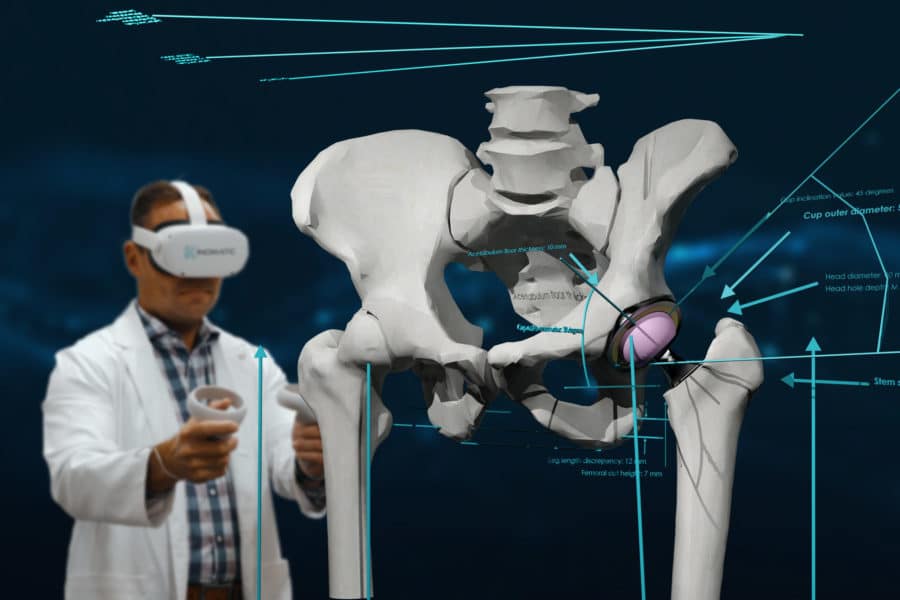By converting CT scans into patient specific 3D models, surgeons gain a comprehensive view of a patient’s anatomy in an interactive VR environment where they can simulate surgery. The goal of custom surgical planning is to recreate the patient’s natural biomechanical alignment, leading to a more natural feeling joint and improved patient satisfaction.
ARROYO GRANDE, Calif.–(BUSINESS WIRE)–Kinomatic, a leader in surgical templating, recently launched a novel virtual reality based templating platform that allows surgeons to develop custom surgical plans for both knee and hip arthroplasty. The Kinomatic VR surgical planner is the first virtual reality platform specifically designed for orthopedic surgeons. This open platform can work with any implant system, and can be customized for various surgical techniques and surgical approaches. The company’s proprietary VR application allows surgeons to view and manipulate surgical plans with unparalleled detail. Currently, the platform can support pre-operative modeling for both knee and hip arthroplasty. They anticipate releasing shoulder and spine surgical modeling in the coming months.
Kinomatic’s unique platform gives surgeons the ability to template arthroplasty cases using their preferred implant, surgical technique, and specifications. Patients receive a high resolution CT scan, which then gets converted into an exact 3D model of the patient’s joint. Once the modeling is completed, the surgeon can determine the exact size and orientation of the implant that will most closely recreate the natural joint anatomy. The finished model is converted into Kinomatic’s own VR application for Oculus Quest for surgical simulation. Kinomatic gives surgeons the ability to model out every aspect of the procedure in advance. This novel solution helps surgeons recreate the ideal biomechanical alignment of the patient’s native joint.
Recent data shows that both knee and hip arthroplasty volume is currently on the rise in the United States, and the average age of patients is steadily declining. As younger and more high demanding patients opt for arthroplasty surgery, surgeons are starting to recognize the importance of patient-specific planning and optimal implant balancing. Implant malorientation is known to decrease both implant longevity and overall patient satisfaction; therefore, emerging technologies focused on optimizing implant alignment have the ability to significantly increase measurable patient outcomes.
“Our goal at Kinomatic is to improve the patient experience as much as possible,” said Shaun Lea, CEO of Kinomatic. “We are focused not just on measurable postoperative outcomes like range of motion, but more so on patient experience and satisfaction metrics. All patients have different goals after arthroplasty, and we want to help surgeons better understand and achieve those goals. So much of the new technology for arthroplasty is focused on decreasing the small percentage of bad outcomes. We want to raise the bar and turn good outcomes into exceptional outcomes. We want each patient to have a joint that so closely mirrors their existing anatomy that they eventually forget they ever had surgery.”
Kinomatic is currently partnering with select surgeons and orthopedic practices across the US to provide comprehensive custom surgical planning. Kinomatic is headquartered in Arroyo Grande, CA.
Learn more about how Kinomatic works here.
